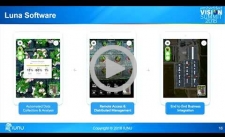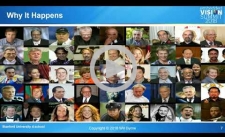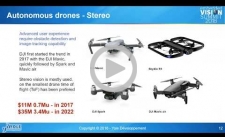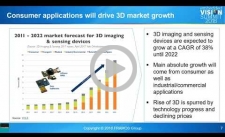|
How to Get the Labeled Data for Free
Contextual machine understanding depends on labeled data, and gathering this data can be a significant constraint on growth. Paying for data, specifically paying for labeled data, is putting the cart before the horse. With the right strategy, you can get the customer to pay you while collecting the data and labeling it for you, resulting in a financial and technical virtuous cycle driving growth. Matt King, CTO of IUNU, explains how his company offers commercial plant growers practical value in exchange for labeled data that drives creating more value.
Overcoming Bias in Computer Vision – A Business Imperative
The rollout of computer vision applications – even by some of the world's most influential tech companies – have been marred by issues of bias against specific groups. Overcoming bias in AI-enabled products isn't just an ethical imperative, it's crucial to products and businesses that succeed across a wide range of users and contexts. Entrepreneur Will Byrne reviews real-world cases of bias in products to date and outlines practical steps to overcome the issue in your own product.
|
|
From 2D to 3D: How Depth Sensing Will Shape the Future of Vision
For several decades, 3D imaging and sensing technologies have matured, thanks to extensive, successful deployments in high-end applications, mainly in medical and industrial markets. More recently, as 3D sensor costs have dropped, 3D imaging and sensing devices have become a significant business, generating almost $2B in revenue in 2017, with strong growth prospects driven by consumer devices such as the iPhone X with its TrueDepth camera module. Currently there are three main depth sensing approaches on the market: stereo vision, structured light and time-of-flight. Each of these approaches has pros and cons, from a technical point of view and with respect to cost. Guillaume Girardin, Division Director for photonics, sensing and displays at Yole Développement, explains the key strengths and weaknesses of each of these technologies and analyzes the cost of adding them to a system based on his firm's recent teardown analyses. He also gives an overview of this depth sensing sensor market and the main factors driving it, and explores how this market could shape the future of vision.
Data-driven Business Models Enabled by 3D Vision Technology
This presentation from Christopher Scheubel, Head of IP and Business Development at FRAMOS, describes which applications are enabled by low-cost 3D vision technology, such as home robotics, smart cities/communities and drones for precision farming, and which business models can be based on the generated data. All industry verticals directly benefit from 3D vision, but even more value can be generated based on the enormous generated 3D data set. A vacuum cleaner robot will map its environment using SLAM algorithms, for example, to maneuver intelligently around obstacles and avoid running over valuables like jewelry. Beyond this direct benefit, an extremely rich data set is created, containing information on apartment size and furniture. This information can be used for target marketing, as the robot has already mapped out how big the new couch could be. The furniture arrangement across many households could be used for future apartment design. This presentation explores these kinds of data-driven business models for key industry verticals.
|
|
Bay Area Computer Vision and Deep Learning Meetup Group: December 4, 2018, 6 pm PT, Santa Clara, California
Consumer Electronics Show: January 8-11, 2019, Las Vegas, Nevada
Embedded Vision Summit: May 20-23, 2019, Santa Clara, California
More Events
|






